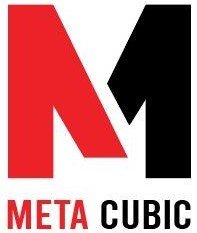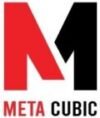Top Frameworks for Web Application Development
In the world of web application development, choosing the right framework can make a significant difference in the success of your project. With numerous options available, it can be challenging to determine which framework is best suited for your specific needs. This article will explore and highlight some of the top frameworks for web application development, providing insights into their features, benefits, and use cases.
Introduction
In this digital age, web applications have become an integral part of our lives. From social media platforms to e-commerce websites, web applications power various online experiences. To build robust, scalable, and efficient web applications, developers rely on frameworks that provide the necessary tools and structures. Here are some of the top frameworks for web application development.
AngularJS
ngularJS, developed by Google, is a popular framework for building dynamic web applications. It follows the Model-View-Controller (MVC) architectural pattern and offers a wide range of features to simplify application development. AngularJS provides two-way data binding, dependency injection, and modular development, making it an excellent choice for large-scale applications.
- Open-source framework: AngularJS is an open-source framework developed and maintained by Google. It provides a robust platform for building scalable and feature-rich web applications.
- MVC architecture: AngularJS follows the Model-View-Controller (MVC) architectural pattern, which helps in separating the application logic from the presentation layer. This allows for better organization and maintainability of the codebase.
- Two-way data binding: One of the standout features of AngularJS is its ability to establish two-way data binding. This means that any changes made to the data in the user interface are automatically reflected in the underlying data model, and vice versa. It simplifies the process of handling user input and updating the application state.
- Dependency injection: AngularJS provides a built-in dependency injection system, which makes it easier to manage dependencies between different components of the application. This promotes modularity and reusability of code, leading to more maintainable and testable applications.
- Directives: AngularJS introduces the concept of directives, which are HTML attributes or elements that extend the functionality of HTML. Directives allow developers to create custom behaviors and reusable components, enhancing the overall flexibility of the framework.
React
It allows developers to create reusable UI components, making the development process more efficient. React follows a component-based approach and promotes the concept of a virtual DOM, resulting in fast and responsive web applications. React’s popularity has grown rapidly, and it is widely used by companies such as Airbnb, Netflix, and Instagram.
- Component-based architecture: React follows a component-based architecture, where the user interface is divided into reusable components. Each component encapsulates its own logic and state, making it easier to manage and maintain complex UIs.
- Virtual DOM: React utilizes a virtual DOM (Document Object Model) to efficiently update and render the UI. The virtual DOM is a lightweight representation of the actual DOM, and React compares the changes made to the virtual DOM with the real DOM, minimizing the number of actual DOM manipulations and improving performance.
- JSX syntax: React uses JSX (JavaScript XML) syntax, which allows developers to write HTML-like code within JavaScript. JSX makes it easier to create and manipulate components, enhancing the readability and maintainability of the code.
- Unidirectional data flow: React follows a unidirectional data flow, also known as one-way data binding. This means that the data flows in a single direction, from parent components to child components. It simplifies the debugging and tracking of data changes, reducing potential bugs in the application.
- Reusable components: React promotes the reusability of components, enabling developers to create a library of UI components that can be easily reused across different projects. This saves development time and effort and also ensures consistency in the user interface.

Vue.js
It offers a gentle learning curve, making it suitable for both beginners and experienced developers. Vue.js provides reactive data binding, component-based development, and straightforward syntax, enabling developers to build interactive web interfaces quickly. It has gained significant traction in recent years and is known for its performance and flexibility.
- Progressive framework: Vue.js is often referred to as a progressive framework because it allows developers to gradually adopt its features and integrate them into existing projects. This makes it suitable for both small-scale and large-scale applications.
- Reactive data binding: Vue.js provides a reactive data binding system, which means that when the data in the application changes, the UI is automatically updated to reflect those changes. This simplifies the process of managing and synchronizing the application state.
- Component-based architecture: Vue.js follows a component-based architecture, where the user interface is divided into reusable components. These components encapsulate their own logic, styles, and templates, allowing for better organization and maintainability of the codebase.
- Template syntax: Vue.js uses a declarative template syntax that allows developers to write HTML-like code with additional features such as directives and bindings. This makes it easier to understand and manipulate the components’ behavior and appearance.
- Directives: Vue.js provides a rich set of built-in directives, such as v-if, v-for, and v-bind, which allow developers to easily manipulate the DOM and add dynamic functionality to the components. Custom directives can also be created to extend the framework’s capabilities.
Ruby on Rails
Ruby on Rails, often referred to as Rails, is a popular framework for web application development. It follows the convention over configuration (CoC) principle, emphasizing simplicity and developer productivity. Rails provide a robust set of tools and libraries, enabling developers to build feature-rich web applications rapidly. It is written in Ruby, a dynamic and expressive programming language.
Laravel
Laravel is a PHP framework known for its elegant syntax and developer-friendly approach. It provides a robust ecosystem with features like routing, caching, and database migrations, simplifying the development process. Laravel follows the Model-View-Controller (MVC) architectural pattern and promotes code organization and maintainability. It has gained popularity for its simplicity and extensive documentation.
- MVC architecture: Laravel follows the Model-View-Controller (MVC) architectural pattern, which helps in separating the application’s logic, data, and presentation layers. This promotes code organization, modularity, and reusability.
- Expressive syntax: Laravel has a clean and expressive syntax, making it easy to read and write code. It provides convenient methods and shortcuts that streamline common web development tasks, reducing development time and effort.
- Routing system: Laravel offers a powerful routing system that allows developers to define clean and meaningful URLs for their web applications. The routing system enables easy mapping of URLs to specific controller actions, making it straightforward to implement RESTful APIs.
- Eloquent ORM: Laravel includes Eloquent, an object-relational mapping (ORM) system that simplifies database management. It provides a simple and expressive way to interact with the database, allowing developers to define relationships between database tables using PHP code.
- Blade templating engine: Laravel utilizes the Blade templating engine, which offers a straightforward way to create reusable templates. Blade templates provide features like template inheritance, conditional statements, and loops, making it easy to build dynamic and modular views.
ASP.NET
It allows developers to build dynamic websites, web applications, and web services using NET and C#. ASP.NET provides a robust set of tools and libraries, including the ASP.NET MVC framework, which follows the Model-View-Controller architectural pattern. It offers excellent scalability, security, and performance.
Flask
It emphasizes simplicity and minimalism, allowing developers to build web applications quickly. Flask provides essential features for web development, such as routing, template rendering, and session management. It is well-suited for small-scale projects and prototyping.
Conclusion
Choosing the right framework for web application development is crucial for the success of your projects. Each framework mentioned in this article has its strengths and caters to different use cases. AngularJS, React, and Vue.js are popular choices for building dynamic and interactive user interfaces. Ruby on Rails and Django excel in rapid development and clean design. Laravel and Express.js offer simplicity and flexibility. ASP.NET and Flask are suitable for specific programming languages and provide powerful features for web development.






